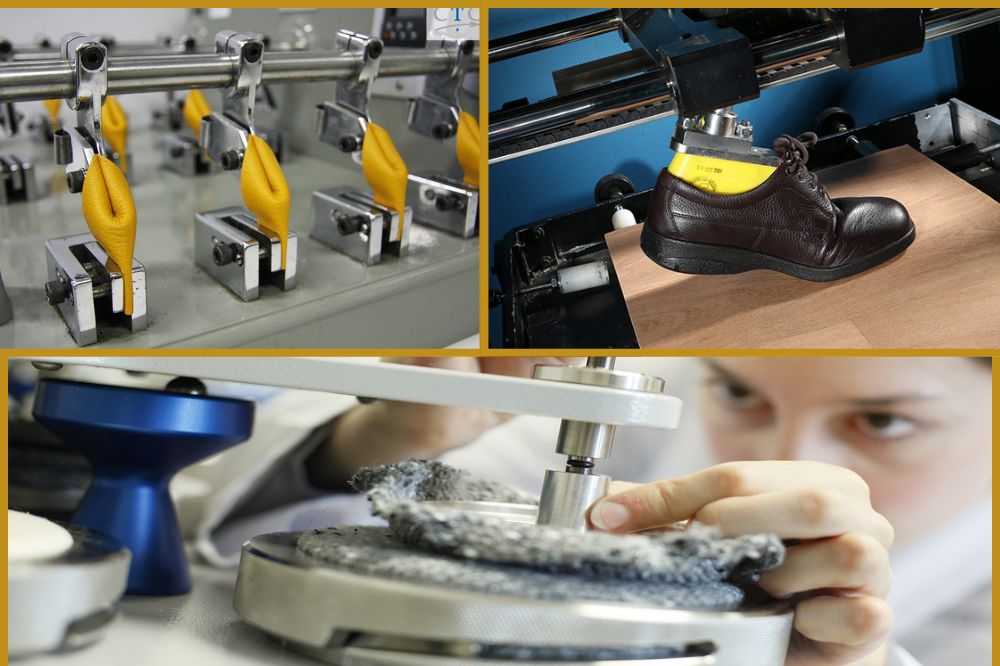Fabric pilling occurs when fibers break or loosen, forming small, fuzzy balls on the fabric’s surface. Understanding this process is crucial for maintaining the quality of your garments. Let’s explore the factors contributing to fabric pilling and how it affects different types of fabrics.
What Causes Fabric Pilling?
Friction as a Primary Cause
One of the leading causes of fabric pilling is friction. When fabrics rub against each other, especially in areas of high movement, the fibers can break or wear down, resulting in pilling.
Low-Quality Fibers and Yarns
The quality of fibers and yarns used in fabric production plays a significant role in pilling. Cheap or poorly constructed materials are more prone to pilling than high-quality alternatives.
Washing and Drying Methods
Incorrect washing and drying techniques can exacerbate pilling. Aggressive washing, high heat, and overloading the washing machine can contribute to fiber damage and pilling.
Fabrics Prone to Pilling
Not all fabrics are created equal when it comes to pilling. Let’s explore some common culprits:
Cotton
While cotton is a beloved fabric for its breathability, it is prone to pilling due to its short fibers.
Wool
Wool garments are susceptible to pilling, especially in areas that experience friction, like sleeves and underarms.
Polyester
Polyester fabrics can pill, particularly when exposed to frequent rubbing.
Blends
Fabrics that blend different materials, such as cotton-polyester blends, may exhibit pilling tendencies.
How to Identify Pilling
Spotting pilling early is key to addressing the issue. Here are some methods:
Visual Inspection
Examine your garments closely for small balls or fuzziness on the fabric surface.
Rubbing Test
Rub the fabric gently to see if any pills form. This can help identify areas prone to pilling.
Use of Magnifying Glass
For a closer look, use a magnifying glass to inspect the fabric for tiny pills.
Preventing Fabric Pilling
Taking preventive measures can prolong the life of your clothing:
Gentle Washing Techniques
Opt for a gentle cycle and use a mild detergent to reduce friction and fiber damage.
Turn Garments Inside Out
Turning clothes inside out minimizes friction between the fabric and other surfaces.
Use of Fabric Softeners
Fabric softeners can reduce friction and static electricity, decreasing the likelihood of pilling.
Choosing Pill-Resistant Fabrics
Not all fabrics succumb to pilling easily. Consider these options:
High-Quality Cotton
Choose cotton with longer fibers for increased durability and reduced pilling.
Merino Wool
Merino wool, with its fine fibers, is less prone to pilling compared to traditional wool.
Nylon
Nylon fabrics are known for their resilience and resistance to pilling.
Acrylic
Acrylic fabrics are synthetic and often resist pilling, making them a suitable alternative.
Dealing with Pilling
If pilling has already occurred, here’s how to address it:
Manual Removal with a Fabric Shaver
A fabric shaver can safely remove pills without damaging the fabric.
Sweater Stones and Combs
Gently combing or using a sweater stone can be effective for smaller pills.
Commercial Fabric De-Pilling Products
Various products on the market are designed to remove pills; choose one that suits your fabric.
Common Misconceptions About Fabric Pilling
Dispelling myths about fabric pilling is essential:
All Fabrics Are Prone to Pilling
While many fabrics can pill, some are more resistant than others.
Only Low-Quality Fabrics Pill
Even high-quality fabrics can pill, depending on factors like care and use.
How Pilling Affects Comfort and Appearance
Understanding the consequences of pilling is crucial:
Impact on Garment Lifespan
Pilling can shorten the lifespan of garments, affecting their overall durability.
Influence on Comfort and Aesthetics
Pilled fabrics may feel rough and look worn, impacting comfort and appearance.
Understanding Fabric Pilling in Bedding and Upholstery
Pilling isn’t limited to clothing. It can affect bedding and upholstery too:
Pilling in Sheets and Pillowcases
Bedding made from certain fabrics may develop pills over time.
Strategies for Preventing Pilling in Upholstery
Choosing the right upholstery fabric and using preventive measures can combat pilling.
Eco-Friendly Approaches to Combatting Pilling
For those environmentally conscious, consider these approaches:
Sustainable Fabric Choices
Opt for fabrics produced sustainably to minimize environmental impact.
Eco-Friendly Laundry Practices
Conserve energy and water while washing to reduce the overall environmental footprint.
Future Innovations in Pilling Prevention
Technology is playing a role in reducing fabric pilling:
Technological Advancements
Innovations in fabric engineering are creating materials less prone to pilling.
Sustainable Fabric Engineering
Developing fabrics that resist pilling without harming the environment is a growing focus.
The Cost of Pilling: Economic and Environmental Impact
Consider the broader consequences of fabric pilling:
Consumer Costs
Constantly replacing pilled garments can be costly for consumers.
Environmental Consequences
Excessive pilling contributes to textile waste and environmental degradation.
Consumer Awareness and Education
Empowering consumers with knowledge is crucial:
Importance of Informed Buying Decisions
Make informed choices when purchasing clothing to reduce the risk of pilling.
Spreading Awareness About Fabric Care
Educate others on proper fabric care to minimize pilling and extend garment lifespan.
Conclusion
In conclusion, understanding fabric pilling is vital for maintaining the quality and longevity of your clothing and home textiles. By identifying the causes, choosing the right fabrics, and adopting preventive measures, you can minimize the impact of pilling. As technology advances, we can expect more innovations in fabric engineering, offering sustainable and durable alternatives.
FAQs About Fabric Pilling
- Q: Can all fabrics be completely pill-resistant?
- A: While some fabrics are more resistant, complete pill resistance is challenging due to factors like wear and washing.
- Q: Are natural fibers more prone to pilling than synthetic ones?
- A: Not necessarily. Both natural and synthetic fibers can pill, but the likelihood depends on the specific type of fiber and its quality.
- Q: Can fabric softeners eliminate existing pills on clothes?
- A: Fabric softeners can reduce friction and static, preventing further pilling, but they won’t eliminate existing pills.
- Q: How often should I use a fabric shaver to maintain my clothes?
- A: Use a fabric shaver as needed, focusing on areas prone to pilling, but avoid excessive use to prevent fabric damage.
- Q: Is fabric pilling a sign of poor fabric quality?
- A: Not necessarily. Even high-quality fabrics can pill, but proper care and preventive measures can minimize the risk.






